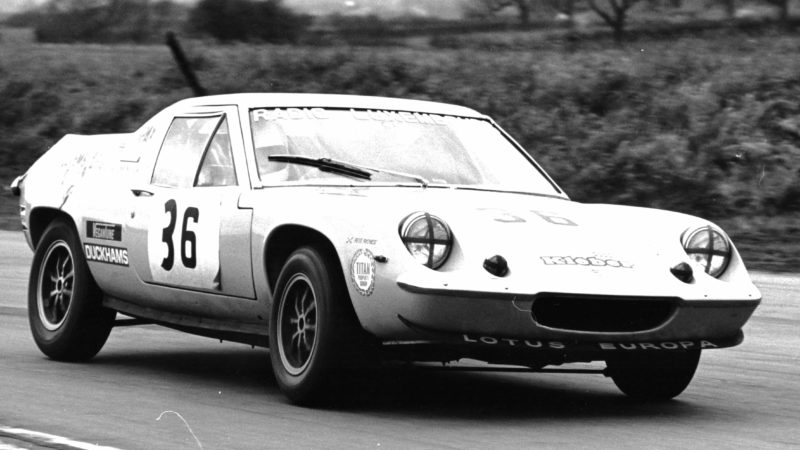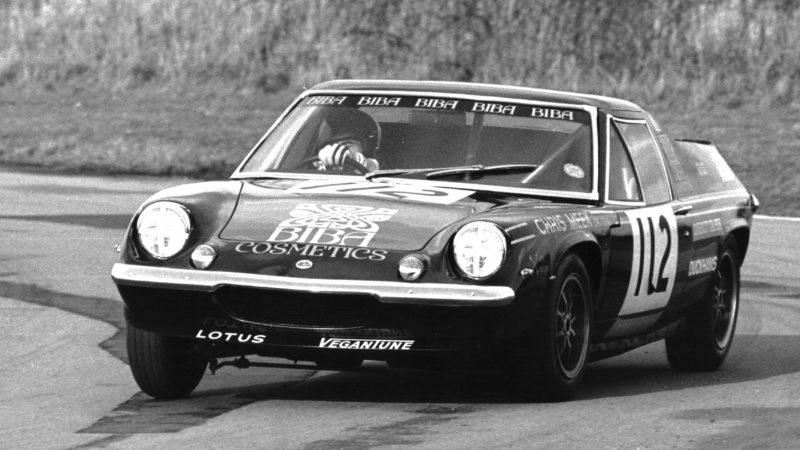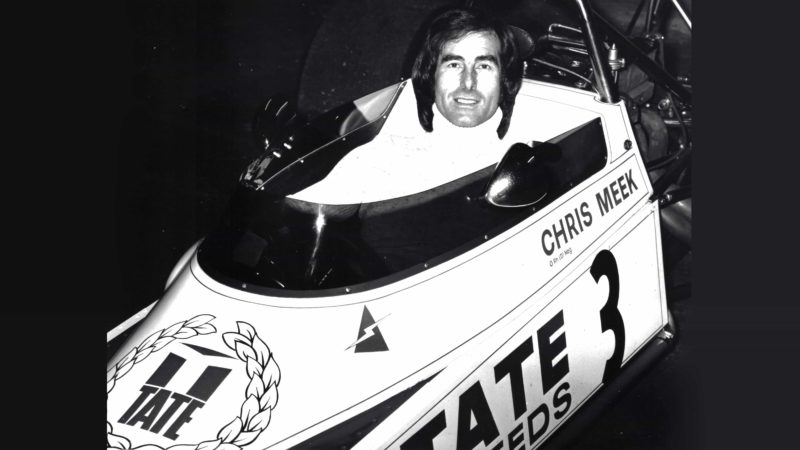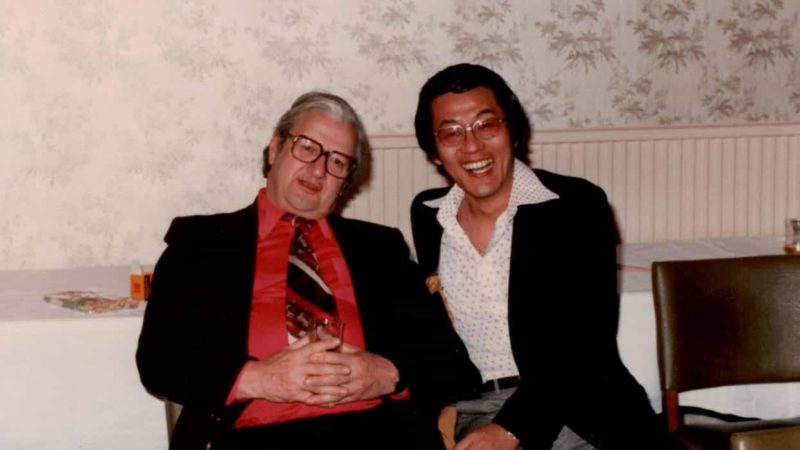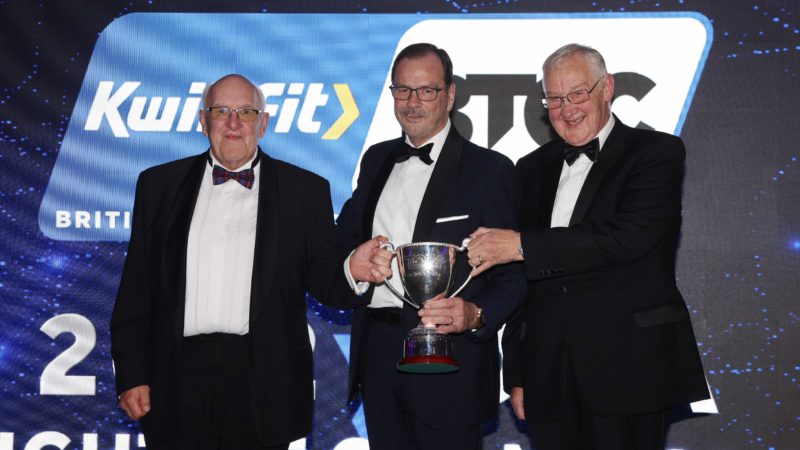Peter Riches: The Motor Sport Interview
Now 70, the BTCC technical director is passing his sheriff’s badge to a successor – his son. Here he reflects on a long career of rule-bending and rule-making, and how he dealt with difficult characters
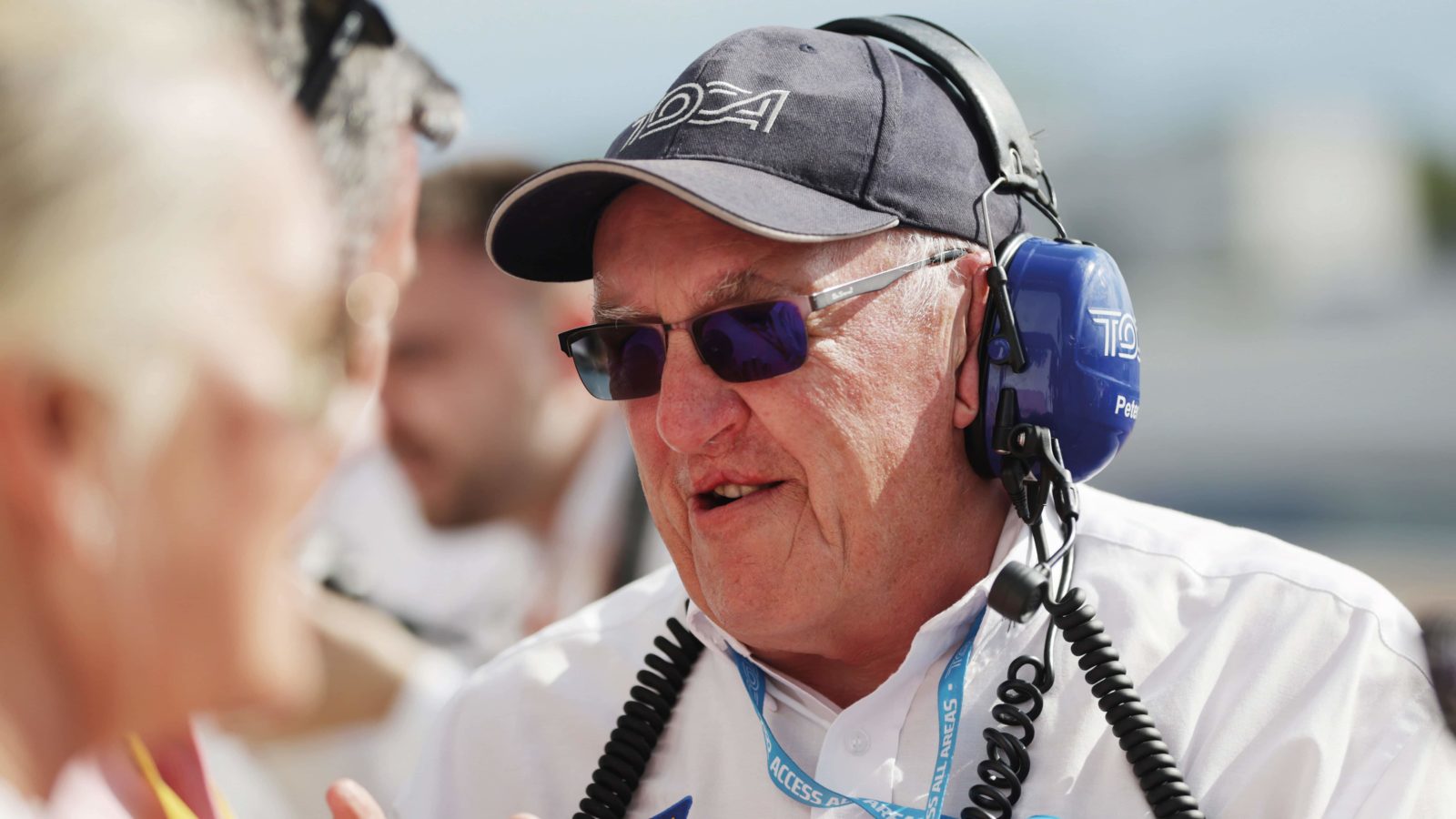
Jakob Ebrey
Motor sport loves a poacher-turned-gamekeeper. Who better than a former mechanic or engineer who knows all the tricks (and has on occasion used them) to keep slippery racing teams on the straight and narrow? In Formula 1, ex-Brabham boys Charlie Whiting and Herbie Blash were ideal when they became paddock sheriff and deputy, and the equivalent on the UK scene is Peter Riches, who has just completed his 30th season as technical director of the British Touring Car Championship. He’s the teams’ best friend – and worst enemy.
Now 70, Riches has given series boss Alan Gow the headache he’s been trying to avoid for years. After 323 events and 821 races he’s retiring and might have proven as difficult to replace as the late and much-missed Whiting – except in the BTCC there is a clear and logical succession plan. Riches’ son, Sam, has 20 years in the paddock under his belt as understudy to the old man and will now take over the family business. To ease the transition, Dad has promised Gow to stick around as a consultant for at least a year, possibly longer. As with most racing folk, stepping off the gas completely seems a tall and unrealistic order.
Riches’ ‘poacher’ days couldn’t have been more ideal for what he’d need in his years as a paddock policeman. He worked weekends in the mid-1970s in the wild world of Special Saloons and production sports cars for the flamboyant Chris Meek, then spent 17 years at Lotus, working for and soaking up as much as he could from those motor sport A-listers Colin Chapman and Tony Rudd.
Chief scrutineer at the British Grand Prix since 1991 and FIA technical delegate for Super Touring at the height of the tin-top manufacturer boom, Peter has just been recognised by the BRDC, which has awarded him – fittingly – the Colin Chapman Trophy for his dedicated service to the sport he loves.
This son of a butcher has rubbed shoulders and at times jousted with the sharpest tools in the motor sport box. A good time, then, to lift the lid on his vast experience.
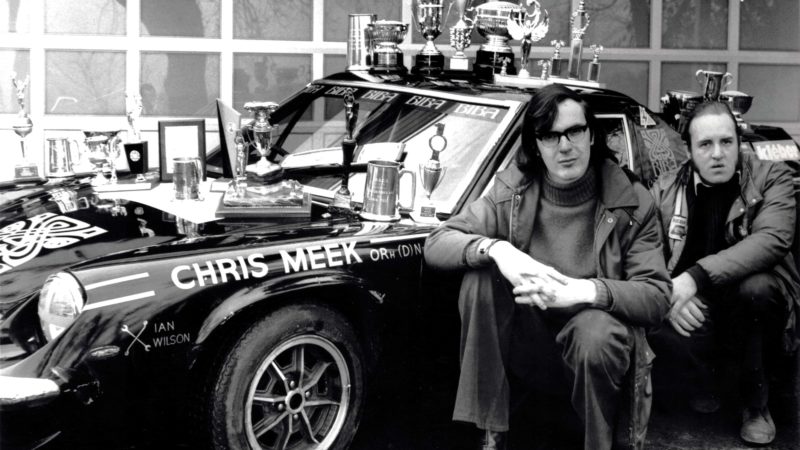
Fellow mechanic Ian Wilson, left, and Peter Riches with booty from the Europa’s success
Courtesy of Peter Riches
Motor Sport: Does it feel the right time to stop?
PR: “Well, I’m 70. It was something we planned to do earlier, but I agreed to stay and then Covid came along. We thought we’d get to the 30-season mark. Alan has always said he didn’t want me to go, so he kept making me put off the decision. He was stuck with what to do because getting somebody from outside might have been like reinventing the wheel. There’s so much history with these jobs. You see what’s happened in F1. Not many cross over to the dark side, as the joke goes, and when they do most soon head back to the white.
“You had Laurent Mekies [who joined the FIA in 2014, became deputy race director, but then headed to Ferrari in 2018] and Marcin Budkowski [who joined the FIA after time with Prost, Ferrari and McLaren, then courted controversy by moving back to a team role at Renault]. They were geared up as Charlie Whiting’s replacement and it never happened.
“It is difficult. Alan’s fear is a team engineer taking the job, then changing their mind two years down the road, leaving him looking for somebody else. In-house was his preferred option and Sam has taken on the challenge.”
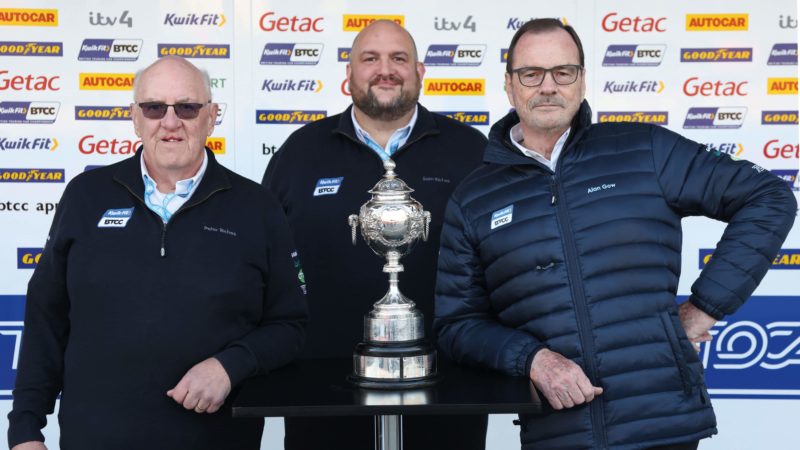
From left: Peter, his son Sam who’ll be stepping into Dad’s shoes, and BTCC boss Alan Gow
Jakob Ebrey
The timing also makes sense given how you’ve successfully introduced the hybrid regulations this year. You must be pleased with how it’s gone.
PR: “There have been a few teething problems but we’re basically all right. It is the right time because these five-year rules cycles go around remarkably quickly. Nobody realises how long it takes to re-do a set of rules. There are some complex questions that have to be asked, such as for 2027 what should a BTCC car be? Is a 2-litre petrol engine still acceptable? Do you up the electric content? If you do, the cost will go up, so is it sustainable for a national championship? Because an EV is not for anything other than manufacturer level. There’s a lot to decide and I just didn’t want to go through that again.”
“It may well be that a 2-litre engine with more hybrid is the answer“
Gow’s TOCA organisation has steered the BTCC successfully through most of the past 30 years. Is there’s any reason to change?
PR: “The only question is Alan will be 70 by 2025. Will he want to carry on? Then the problem is who would you get to run it? If you are going to go, you go at the beginning of a cycle or once a cycle has started.”
So what’s your feeling on the direction the BTCC should take in the future?
PR: “I really don’t know. Are we drifting away from electric cars with all these new synthetic and e-fuels? I think that is a very good question. Ulrich Baretzky at Audi has always said the electric car will never be the answer, it will always be a combination, that there is a long way to go with the petrol engine. He may be right. All of a sudden we’re raving about the fuel economy and environmental aspect of the new fuels and people are beginning to question the cycle from birth to grave of the electric car. I remember years ago the Government sent us all a box of new lightbulbs which were energy saving, and now they are totally out of date because LED has replaced them. Technology moves so fast. There’s a long way to go and it may well be that a 2-litre engine with more hybrid is the answer.”
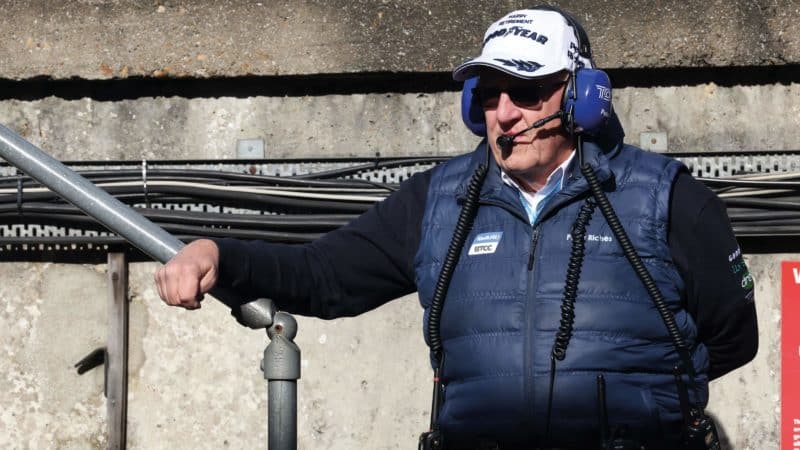
Riches might be retiring from his role as technical director at the BTCC, but he’ll be around for another season as a consultant
Jakob Ebrey
Let’s go back to the beginning. Where and when did motor sport start for you?
PR: “Our doctor in Watton, where I grew up and which is not far from Snetterton, used to be the GP at the circuit occasionally. Some Sundays he’d take me on a day out because he was friends with my parents. That was my first experience, in my early teens.
“Then Teddy Savory lived in Watton as well. When I first knew him he was racing a Broadspeed Escort and he also drove Mick Hill’s Boss Capri at times. Teddy went on to set up Modus and ran customer cars in Formula 3, then designed his own car with Jo Marquart who he stole from GRD. I started going to F3 rounds with Modus, including Monaco in 1974 when Tony Brise finished second to Tom Pryce. Teddy ran an F3 car for Danny Sullivan and an Atlantic for Brise.
“In 1970 I went to university in Leeds and got involved with the university motor club, 12-car rallies and all that. The world was a different place back then: no overalls, no speed limits, just fun. Towards the end of my time as a student Tate of Leeds, a Ford dealer, was backing Chris Meek and Malcolm Wayne in Formula Atlantic and they were keen to have students help them at weekends. Chris was also racing a 2-litre BDG Escort in Special Saloons, at the same time as Nick Whiting, Charlie’s brother. So that’s how I met Charlie. People can’t believe Charlie had a life before Brabham and F1… We went back a long way.”
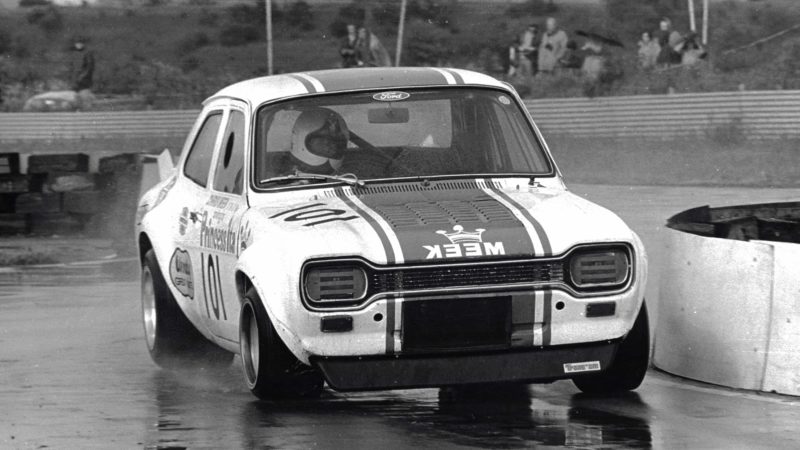
While Riches was a student he assisted Meek at the weekend, who was racing in Special Saloons
Courtesy of Peter Riches
What did you learn from working weekends for Meek?
PR: “At one stage he raced a De Tomaso Pantera, then we had the Lotus Europa in the BRSCC Production Sportscar Championship in the mid-1970s. I’ve got several pictures of that car on my wall. It was always declared legal but I can tell you it wasn’t. It was a car specially built for him by the factory, with a light bodyshell and all sorts of things that were a bit grey. And we never really got caught.”
What was Chris like?
PR: “He was a flamboyant driver who always had a pretty young lady on his arm. A couple of us used to prep the car in the evenings and take it to race meetings, trailering it with our 3-litre Granada estate. Chris would turn up in his Ferrari, wearing flared trousers, a flowery shirt and with hair like a pop star. Motor racing was fun in those days. He seemed to have a new Ferrari every year and some quick motorcycles. He had the numberplate 175 MPH – and he did that on the M1. It wasn’t busy in those days, especially early in the morning. He tried to buy Cadwell and Croft, but he ended up buying Mallory Park. I stayed with him until I moved to Lotus.”
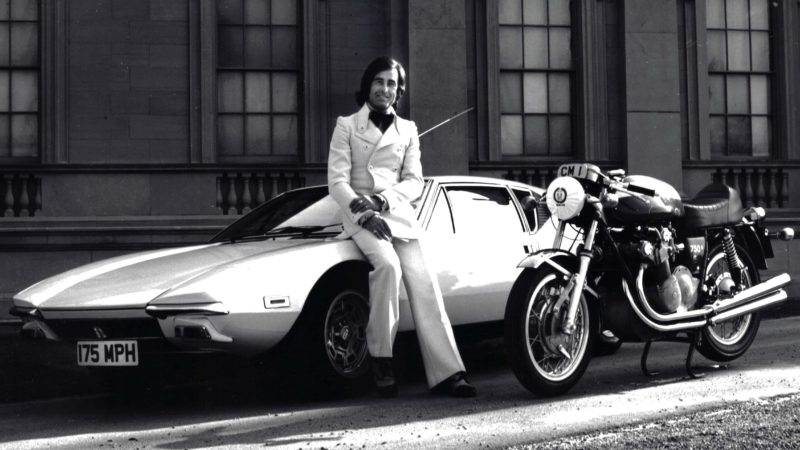
Chris Meek had the numberplate 175 MPH – and lived up to the billing on the M1.
Courtesy of Peter Riches
How did you end up there?
PR: “After university I got a job at Leyland Trucks in Leeds, then Charles H Roe, a coachbuilding company for buses. I ended up as factory manager. They were talking about moving me to Leyland National in Workington, Cumbria and I just decided I didn’t want to go, because that would be the end of the story for motor sport. So I started looking for jobs.
“Chapman never liked developing cars, he liked innovation“
“This was mid-1978. I applied for a job at Team Lotus at Ketteringham Hall, as Andrew Ferguson’s deputy – and Peter Collins got it. We went for the same interview. But Colin liked what he saw of me and sent me straight down to Hethel to Tony Rudd, who offered me a job as production manager at Lotus Cars. I took it and effectively moved back home to Norfolk, above the butcher’s shop with Mum and Dad.”
But you did work for Team Lotus, didn’t you? How did that move come about?
PR: “Ronnie Peterson got killed at Monza and I was at Kett Hall on the Tuesday after that because the Old Man blamed Team’s manufacturing facility for not being on the ball. His argument was if Ronnie had had the spare 79 he should have had he wouldn’t have been where he was on the grid and he wouldn’t have been killed. In those days because you had spare cars we used to take four to a race. Mario Andretti wouldn’t give his spare 79 to Ronnie, so Ronnie had a 78 because there were only three 79s in existence. The fourth was still in the workshop being built. That’s why I got moved because I was running parts manufacturing at Lotus Cars and the Old Man said, ‘Get the new bloke down here.’”
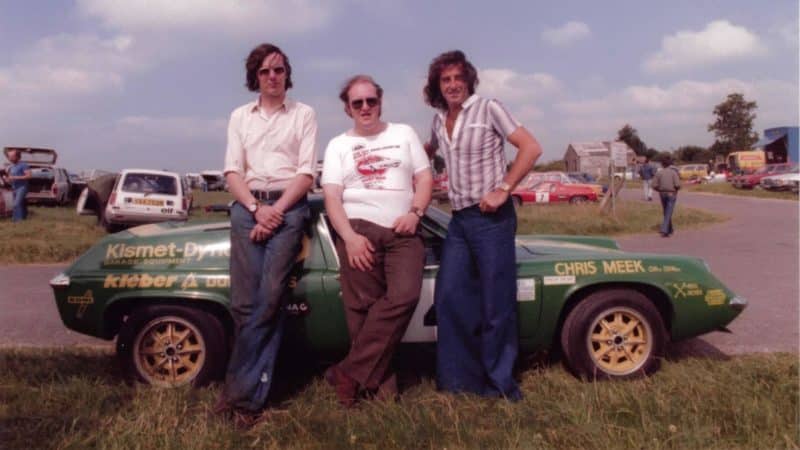
Wilson, Riches and Meek on location. Note Riches’ name on the Lotus by the front wheel
Courtesy of Peter Riches
You didn’t stay with the F1 team for long.
PR: “I found the Old Man’s 25-hour days, eight-day weeks and 53-week years too much. But I learnt a lot. When I joined at the end of 1978 Team Lotus was 51 people. Chapman argued you should never have more than about that number. But the cars were relatively simple compared to now and when the design work was done we’d borrow half a dozen people from Lotus Cars for a weekend to make the moulds and bodywork.”
“John Players left and we had Martini for 1979. Chapman in my view never liked developing cars, he liked innovation. We went from the Type 79 to the wingless wonder, the 80, and it didn’t work. It had too much downforce and guess what? Porpoising. As Peter Wright wrote somewhere recently, what they’ve had this year is nothing new. Once the Old Man lost interest we went back to the 79.
“In the meantime Williams had done a much better job of developing the 79 concept into the FW07. The next year we were in Essex colours and during that year I went back to work for Tony Rudd. It burnt you out, even if you were not travelling. Before fax machines, we used a telex machine. When the boys were in Long Beach, for example, I’d have to be in after midnight to receive anything from them after qualifying. The rest of the boys were in at 6am so they could start making what had been ordered, then I’d have to get it on a plane at Heathrow for a mid-afternoon take-off to get the part to Long Beach for the next day.”
What was Chapman like?
PR: “All right. Hard. The interesting thing with Chapman was although he got through a lot of people there are not many who worked for him who hold a grudge. I remember the launch of the Type 80. We’d had a hell of a week, four hours in bed at the most. The last night before the truck left we didn’t go to bed and my phone rang at home, woke me up at 1am on the Saturday to say, ‘Well done, thanks a lot for all your efforts. Fred [Bushell, Lotus’s finance director] has just paid £500 into your bank account. That was a lot of money in 1979. The taxman never knew anything about it.”
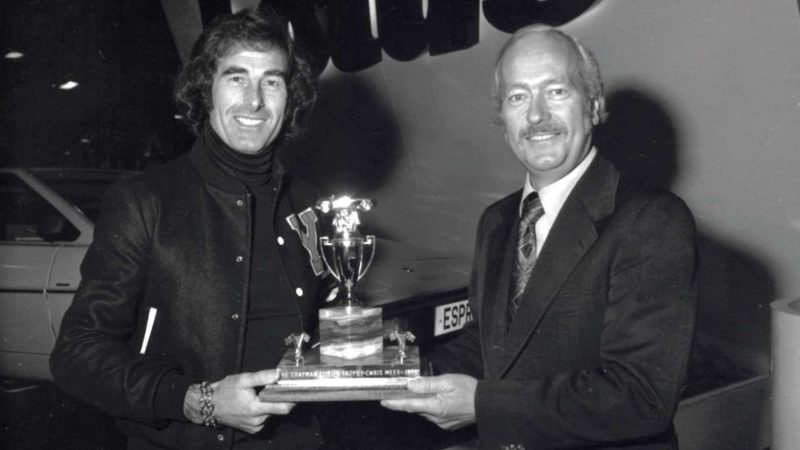
Colin Chapman presents Meek with a trophy for most Lotus race wins during the 1976 season.
Courtesy of Peter Riches
You returned to Lotus Cars and stayed until the end of 1995. Tell us about Hethel.
PR: “When I trundled back I took over running the powertrain department for Tony. His main interest was building up Lotus Engineering again which was the original company name. He successfully sold some engine projects. I think we sold our four-valve cylinder head to four or five customers. That was the start of the engineering business that ran in parallel to Vehicle Engineering which was doing the DeLorean. When that all went wrong I inherited all the engineering workshops, but the business was growing. During the difficult years Engineering kept the whole company going because we were making a good profit.
“I remember the bombshell morning, when security stopped me at the gate and said, ‘Get all your staff in the workshop for a briefing at 8.30am.’ Tony walked in and said, ‘The Old Man died last night,’ and then walked out again. Devastation for a few hours.”
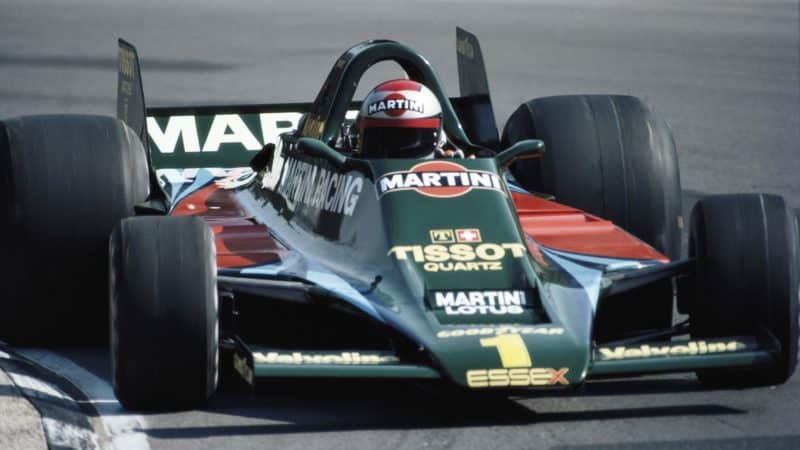
Porpoising is nothing new – in 1979 Mario Andretti reported that his Lotus 80 was suffering downforce issues
Getty Images
What was it like working for Tony Rudd?
PR: “I have his quote behind my desk, which he had behind his: ‘Old age and treachery always beat youth and enthusiasm’, and that is very true. Tony’s view was in simple terms ‘if you mess up make sure I know first; if I find out first then you are in trouble’. He was an incredibly supportive boss and you could talk to him about anything. The danger was if you went to talk to him you lost half an hour. He was a very clever man – a motor racing man.”
“People have rose-tinted glasses about Super Touring“
What drew you into scrutineering?
PR: “I got approached: would I be interested? I went straight into the technical commission which was a short cut in those days. I did my safety basics at Snetterton with dear old Henry Rylett, who was chief scrutineer, and I started with Barry Morris and Howard Mason, Mike Garton and Dougie Ellesmore, Peter Jowitt and Cecil Mitchell. Good people. I picked up the production sports car championship and found quite a few bent cars… The Fiesta championship followed, then I picked up Formula Ford 1600 from Howard Mason at one of the European GPs at Brands Hatch. Grids were full: 40 could practice, only 36 could race.
“Howard found the guy who was leading the championship was under weight, so he went to the back of 40 and didn’t get to race. Howard didn’t think that was fair and walked out. I also inherited Formula Ford 2000 overnight. Then I picked up Formula 3, then I went to touring cars.
“I suppose it was working for a company like Lotus that encouraged it. All my days off for Lotus committee meetings Tony counted as working days. The day I got invited to sit on the MSA technical committee at Belgrave Square, Tony said it’s an honour. With Formula Ford, the engine builders knew the only time I could strip engines during the week was after work. I’d drive down to Minister, on the other side of the Dartford Tunnel, a cup of tea when you got there, Graham [Fuller] would buy fish and chips for when we finished and then I’d drive home – a six-hour round trip after work.”
You’ve worked on the BTCC through almost the whole of the single-class era, full-time from 1996 after you’d left Lotus. PR: “Yes, I missed the start [in 1991]. But I did races as a scrutineer in the four-class era. We also had a short time from 2001 when we had the production class too, when Alan had his little holiday… Super Touring was down to 10 cars by 2000: three Vauxhalls, three Hondas, three Fords and Matt Neal in the Dynamics Nissan. The average cost of each car that year, including the driver’s salary, was about £2.5m. I used to joke we put 30 cars on the grid for less than that. We’re creeping up a bit now, but we’re still well under half a million a car on average, 22 years on.”
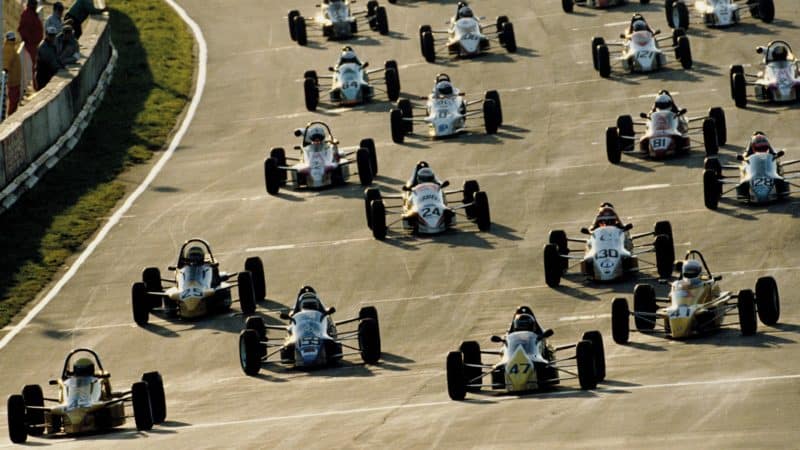
Riches moved into scrutineering, including Formula Ford 1600
Getty Images
Do you look back on the Super Touring era with particular fondness?
PR: “From the point of view of the technology and the people, yes. The characters and the drivers: Gabriele Tarquini, Yvan Muller, Frank Biela, Rickard Rydell, Alain Menu, Laurent Aiello, Tom Walkinshaw, Charly Lamm at Schnitzer and all the rest of them. But if you look at the racing it was nowhere near as good as now. Lap times used to jump by a second a year. In the days when we had around 14 events I remember going to Snetterton in the middle of the summer. Menu let Jason Plato take his first-ever win and sealed the championship. Now our objective is to take it all the way to the last event if we can.
“People have rose-tinted glasses about Super Touring because of the technology, who was in it and the money that was spent. But go back and look at the old Barrie Hinchcliffe VHS tapes. The racing is nowhere near as good. It’s excellent now because we get close racing with 20 cars within one second.”
What’s your approach to dealing with teams and difficult people?
PR: “You get hardened to it. In some ways you can say if they are all whingeing we’ve got it about right. One of the issues we’ve created for ourselves is when, for example, we are at Croft with a 1min 40sec lap, with 23 cars within one second, they are rarely in the order that anyone in the pitlane thinks they should be. They don’t look at the time sheets, they look at the positions. A team will say, ‘If we’re 16th it’s TOCA’s fault because we haven’t got enough turbo boost,’ even though they are only half a second off the pace. Nobody likes Balance of Performance, but we feel generally speaking we are in a reasonable position, and have been for quite a long while.
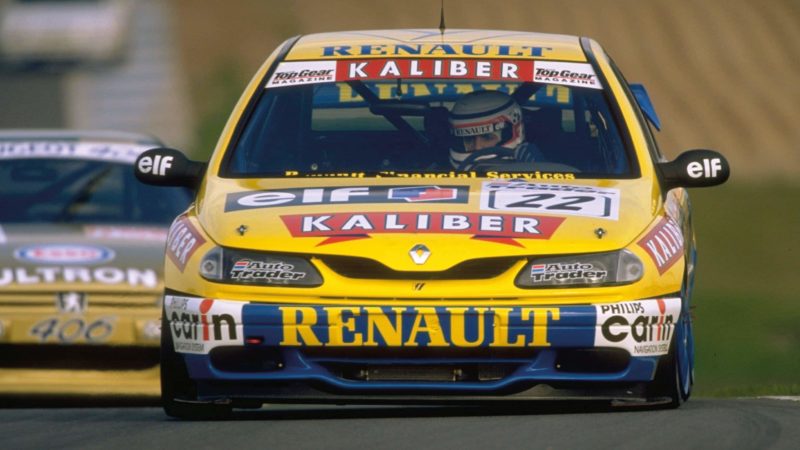
Jason Plato driving the Laguna in BTCC, 1997
Getty Images
“The other thing is the BTCC is not what it used to be in terms of the quality of the team owners. They don’t understand the history. All they have come to do is win, nothing else. You don’t see Haas whingeing that they have an automatic right to win in F1… It’s generally more amateur than it used to be. But then when you go back to the costs of Super Touring in the 1990s, that’s not surprising. It’s a different world completely.”
You’ve held FIA roles too.
PR: “I ended up doing the Macau Grand Prix and that’s how I met Charlie again, because he was FIA technical delegate not only for F1 but also for F3. He taught me a lot. If you ever wanted anything he’d always give you an answer. When I was FIA technical delegate for Super Touring, I reported on events to Gabriele Cadringher but I actually went through Charlie and direct to Max Mosley. I was never on a French payroll, I was always reporting to Max.
“I have done the British GP as chief scrutineer since 1991. The FIA bring their crew along but they still require about 40 scrutineers – those blokes you see in the garages wearing tabards. Herbie Blash is a good mate and Jo Bauer, I go back with him before he was in F1 when he worked in touring cars.”
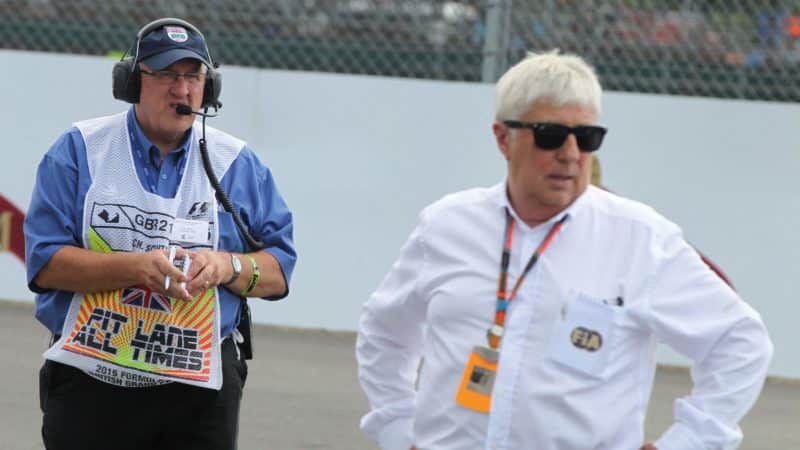
Riches – one of those blokes with a tabard – with Herbie Blash, who is a good friend
Courtesy of Peter Riches
Has the job changed?
PR: “Oh yes. At the start we had nobody from the FIA. Balestre would tell you what he wanted you to do. Normally Britain was picked if they wanted to seal engines because they knew it would be done right. They didn’t have the people they have now. I went to BMW and Ferrari to strip F1 engines before the FIA took all that over. It wasn’t until Charlie got into that role that things started to change. In a way it’s no different to the touring car job. I started that with a set of scales and a ruler too.”
So are you poacher-turned-gamekeeper?
PR: “Yes, that’s me. That’s why the technical committee approached me in the first place.”
